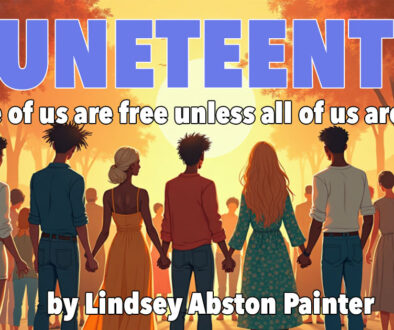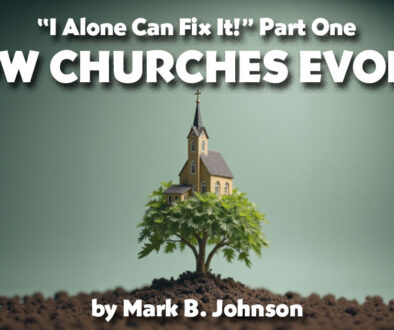Believers Who Know They Are Sinners and Always Will Be
by Alden Thompson | 15 August 2023 |
One of the more recent entries into the “last generation theology” debate is Reinder Bruinsma’s book, In All Humility: Saying No to Last Generation Theology.[1] Chapter two of his book, “Last Generation Theology: What It Is and Where It Came From,” briefly describes the roots and the primary supporters of this movement which claims that the generation alive when Christ comes will demonstrate to the universe that “it is possible to live without sin.”[2]
Perhaps the best-known proponent of Last Generation Theology was M. L. Andreasen (1876-1961), author of some 15 books, most notable of which was The Sanctuary Service.[3] But Bruinsma cites a host of other prominent Adventists who reflected one or more aspects of Last Generation Theology. From the early years Bruinsma lists Joseph Bates, James White, Stephen Haskell, and D. T. Bourdeau as referring to “main elements” of Last Generation Theology. As being influential after 1888, he cites A. T. Jones (1850-1923), E. J. Waggoner (1855-1916), and W. W. Prescott (1855-1944). In the modern era, supporters included Robert Pierson (1911-1989), General Conference president for 13 years (1966-1979), Kenneth Wood (1907-2008), editor of the Adventist Review (1966-1982), and Herbert Douglass (1927-2014), a prolific author who served the Adventist Church in a wide range of editorial, educational, and administrative positions. He was the author of Messenger of the Lord: The Prophetic Ministry of Ellen White.[4]
The movement places heavy emphasis on these two Ellen White quotations:
Those who are living upon the earth when the intercession of Christ shall cease in the sanctuary above are to stand in the sight of a holy God without a mediator.[5]
Christ is waiting with longing desire for the manifestation of Himself in His church. When the character of Christ shall be perfectly reproduced in His people, then He will come to claim them as His own.[6]
According to the logic of the movement, if we are to stand in the sight of a holy God without a mediator, we must perfectly reflect the sinless character of Christ.
Before I develop my primary thesis, the one embodied in my title, I want to note briefly a non-traditional interpretation for each of the Ellen White quotations.
Standing in the sight of a holy God without a mediator
This quote can be seen as a threat or a promise. In the light of John 16:26-27, I want to come down on the side of promise. In the presence of a Father who loves us, we have nothing to fear. Note Jesus’ exact words:
On that day you will ask in my name. I do not say to you that I will ask the Father on your behalf; for the Father himself loves you.
The “not” can so easily be overlooked. But it’s there, loud and clear, transforming the passage from a threat into a promise.
When the character of Christ shall be perfectly reproduced in his people
When applied only to individuals, this text can become a text of terror. But note that a corporate interpretation is twice suggested here: “In his church” and “in his people.” Like the body of Christ in 1 Corinthians 12, all the parts of the body are needed. What one body part lacks, another supplies. When Christ sees his people working together perfectly. Then he can come.
I turn now to my major thesis that God’s people will always stand before him as guilty but forgiven sinners. A crucial passage is the chapter “Joshua and the Angel” in Prophets and Kings (582-592). That chapter allows us to see some significant elements relating to last generation theology.
When I went back to that chapter recently, I was startled and encouraged at how clearly Ellen White presents the case for a sinful people standing in court, but safe under the atoning blood of Jesus. I outline some of the key points below.
Ellen White and last generation theology
I will start by quoting a remarkable statement that I came across when I was preparing the material for the Sinai-Golgotha series, published in the Adventist Review (1981-82). The chapter “Joshua and the Angel” is based on Zechariah 3:1-5, which depicts the attacks of Satan against Joshua, the high priest. Here is the passage in full:
Zechariah 3:1-5: Then he showed me the high priest Joshua standing before the angel of the Lord, and Satan standing at his right hand to accuse him. 2 And the Lord said to Satan, “The Lord rebuke you, O Satan! The Lord who has chosen Jerusalem rebuke you! Is not this man a brand plucked from the fire?” 3 Now Joshua was dressed with filthy clothes as he stood before the angel. 4 The angel said to those who were standing before him, “Take off his filthy clothes.” And to him he said, “See, I have taken your guilt away from you, and I will clothe you with festal apparel.” 5 And I said, “Let them put a clean turban on his head.” So they put a clean turban on his head and clothed him with the apparel; and the angel of the Lord was standing by (NRSV).
In the narrative interpreting this passage, Ellen White makes this striking comment:
But while the followers of Christ have sinned, they have not given themselves up to be controlled by the satanic agencies. They have repented of their sins and have sought the Lord in humility and contrition, and the divine Advocate pleads in their behalf. He who has been most abused by their ingratitude, who knows their sin and also their penitence, declares: “The Lord rebuke thee, O Satan. I gave My life for these souls. They are graven upon the palms of My hands. They may have imperfections of character; they may have failed in their endeavors; but they have repented, and I have forgiven and accepted them. – Prophets and Kings, 589.
Another notable sentence in Ellen White’s interpretation of Zechariah 3 is this one:
Zechariah’s vision of Joshua and the Angel applies with peculiar force to the experience of God’s people in the closing scenes of the great day of atonement (Prophets and Kings, 587).
In other words, this is a vision of the “final generation”!
And we must ask the question: What kind of people are these who find themselves standing before God (and Satan!) in “the great day of atonement”? Here are several excerpts from that chapter clearly indicating that these are not people who stand in sinless perfection before God. No! Joshua was “clothed with filthy clothes” (Zech. 3:1). So were his people:
- “He does not claim that Israel is free from fault. In filthy garments, symbolizing the sins of the people, which he bears as their representative, he stands before the Angel, confessing their guilt, yet pointing to their repentance and humiliation, and relying upon the mercy of a sin-pardoning Redeemer” (PK 583-584).
- “Because of their sins, they had been well-nigh consumed by Satan and his agents for their destruction” (PK 584).
- “Satan’s accusations against those who seek the Lord are not prompted by displeasure at their sins. He exults in their defective characters. . .” (PK 585).
- “In his own strength, man cannot meet the charges of the enemy. In sin-stained garments, confessing his guilt, he stands before God” (PK 586).
- “As Joshua pleaded before the Angel, so the remnant church, with brokenness of heart and unfaltering faith, will plead for pardon and deliverance through Jesus, their Advocate. They are fully conscious of the sinfulness of their lives, they see their weakness and unworthiness; and they are ready to despair” (PK 588).
- “The tempter stands by to accuse them, as he stood by to resist Joshua. He points to their filthy garments, their defective characters. He presents their weakness and folly, their sins of ingratitude, their unlikeness to Christ, which has dishonored their Redeemer. He endeavors to affright them with the thought that their case is hopeless, that the stain of their defilement will never be washed away. He hopes so to destroy their faith that they will yield to his temptations, and turn from their allegiance to God” (PK 588).
- “But while the followers of Christ have sinned, they have not given themselves up to be controlled by the satanic agencies. They have repented of their sins and have sought the Lord in humility and contrition, and the divine Advocate pleads in their behalf. He who has been most abused by their ingratitude, who knows their sin and also their penitence, declares: ‘The Lord rebuke thee, O Satan. I gave My life for these souls. They are graven upon the palms of My hands. They may have imperfections of character; they may have failed in their endeavors; but they have repented, and I have forgiven and accepted them’” (PK 589).
That last quotation stands out like a beacon light, for Christ himself declares to the court that his people “may have imperfections of character.” God’s people can stand confidently in court, not because of their sinless perfection, but because their lives are hid in Christ.
When we compare the material from Christ’s Object Lessons with the material from Prophets and Kings, logically we must give the COL passage a corporate interpretation because Joshua and his cohorts as individuals have “imperfections of character.”
These imperfect saints take refuge in their “clean” clothes, symbolic of their total trust in the grace of Christ.
Therefore, we can conclude that if there is a “final generation,” it is a generation that trusts solely in the grace of Christ.
And all the discouraged Adventists shouted, “Amen!”
- Reinder Bruinsma, In All Humility: Saying No to Last Generation Theology (Westlake Village, CA: Oak and Acorn, 2018). ↑
- M. L. Andreasen, The Sanctuary Service, 2nd edition (Washington, D. C.: Review and Herald, 1947), 302. ↑
- Ibid. ↑
- Herbert Douglass, The Messenger of the Lord: The Prophetic Ministry of Ellen G. White (Nampa, ID: Pacific Press, 1998). ↑
- Ellen White, The Great Controversy, 425. ↑
- Ellen White, Christ’s Object Lessons, 69. ↑

Alden Thompson is a professor emeritus of Biblical Studies at Walla Walla University. His classic book Inspiration is available on Amazon.




